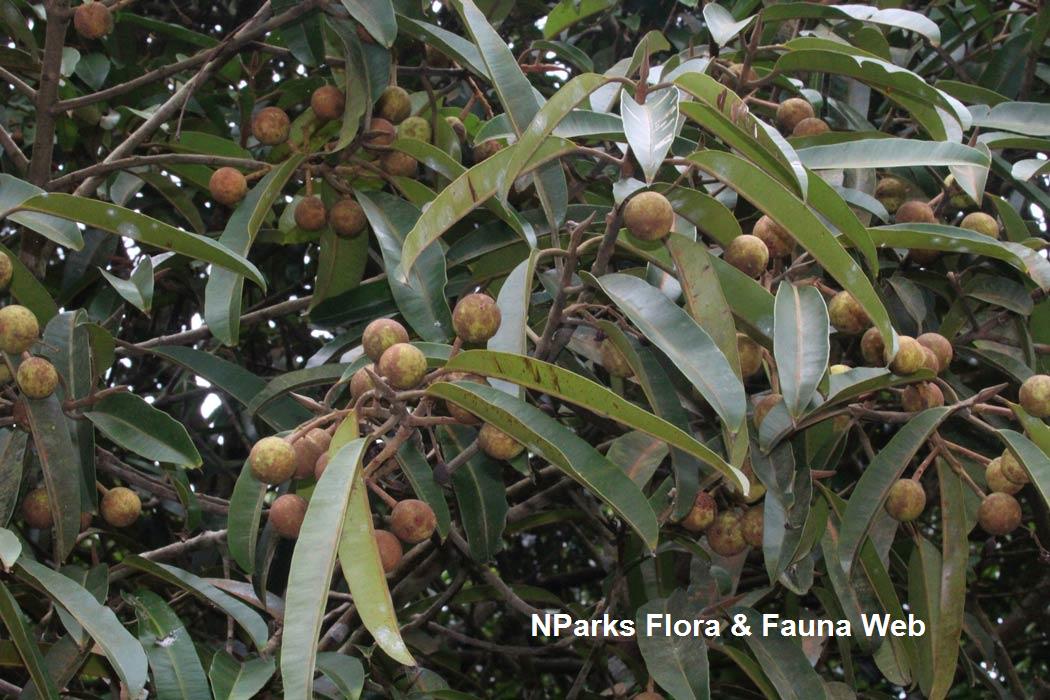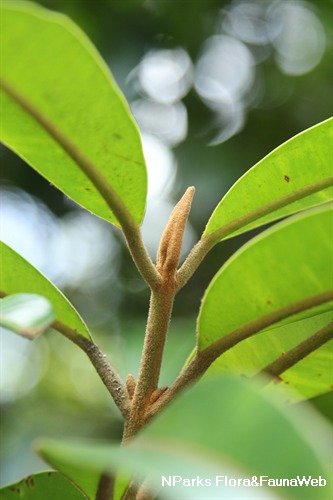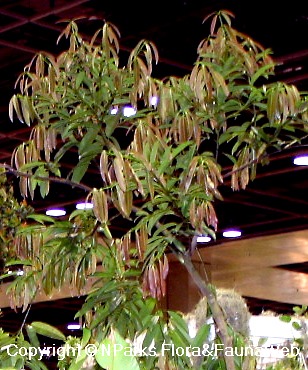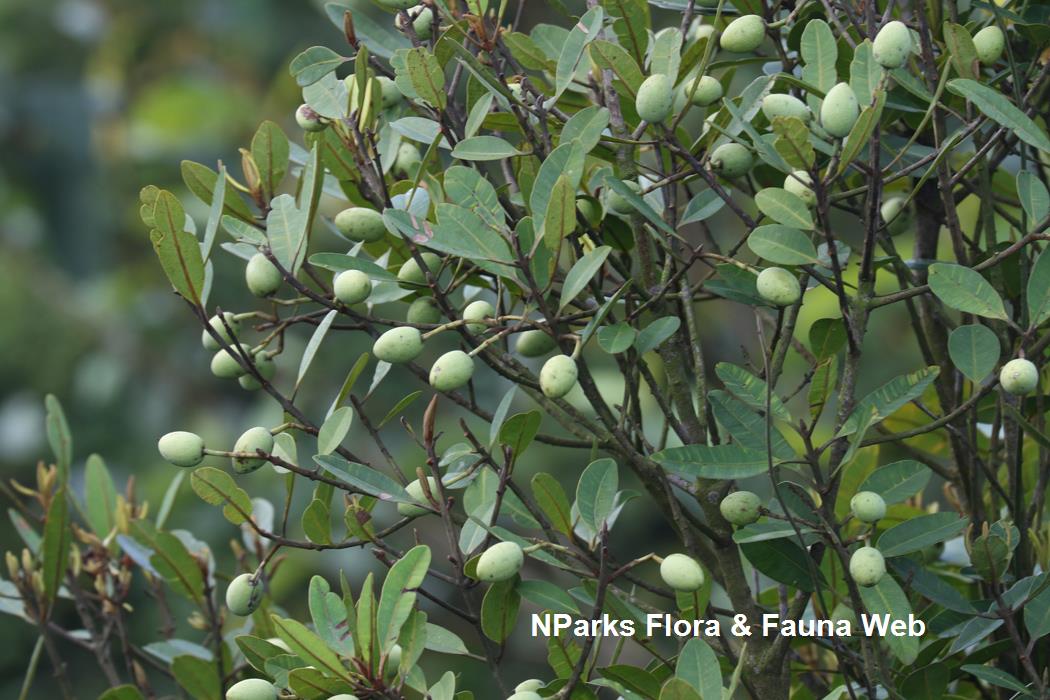
Name
Classifications and Characteristics
| Plant Division | Angiosperms (Flowering Seed Plants) (Dicotyledon) |
|---|---|
| Plant Growth Form | Tree (Medium (16m-30m)) |
| Lifespan (in Singapore) | Perennial |
| Mode of Nutrition | Autotrophic |
| Plant Shape | Irregular |
| Maximum Height | 21 m |
Biogeography
| Native Distribution | Sumatra and adjacent islands, southern Malaysia, to the Lingga Islands (including Singapore), and north-western Borneo |
|---|---|
| Native Habitat | Terrestrial (Primary Rainforest, Secondary Rainforest, Coastal Forest, Freshwater Swamp Forest, Riverine) |
| Preferred Climate Zone | Tropical |
| Local Conservation Status | Native to Singapore (Endangered (EN)) |
Description and Ethnobotany
| Growth Form | It is a tree up to 21 m tall. |
|---|---|
| Foliage | Its opposite, long-stalked leaves have thickly leathery leaf blades that are narrowly egg-shaped to oblong, and 7–20 by 3–6.4 cm. The secondary veins are numerous and parallel to each other. |
| Flowers | Its flowering shoots each bears 7-21 white flowers, and are 3–7 cm long. |
| Fruit | Its green-yellow fruits are round to egg-shaped, and 18–29 by 17–24 mm. Its seeds are 11–21 mm long. |
| Habitat | It grows in heath or peat swamp forests or forests near the sea, and lowland primary rainforest, up to 950 m altitude. It is occurs locally in Nee Soon Swamp Forest and Bukit Kallang. |
| Associated Fauna | Its flowers are insect-pollinated. |
| Cultivation | It can be propagated by seed. |
| Etymology | Greek kalos, beautiful; Greek phyllon, a leaf, referring to the plant’s beautifully-veined leaf blades; Latin lanigera, woolly, referring to the soft hairs characteristic of this species; Latin australis, southern; Latin coriaceus, leathery, as this variety was supposedly related, and found to the south of Calophyllum coriaceum |
| Ethnobotanical Uses | Medicinal: Calanolide A isolated from the plant has been shown to be effective against HIV. Timber & Products: The coarse-grained wood is used for making planks. |
Landscaping Features
| Landscaping | This tree is suitable for parks, large gardens, and roadsides. |
|---|---|
| Desirable Plant Features | Ornamental Flowers |
| Landscape Uses | Suitable for Roadsides, Parks & Gardens, Coastal, Riverine |
Fauna, Pollination and Dispersal
| Pollination Method(s) | Biotic (Fauna) |
|---|---|
| Seed or Spore Dispersal | Biotic (Fauna) |
Plant Care and Propagation
| Light Preference | Full Sun, Semi-Shade |
|---|---|
| Water Preference | Moderate Water |
| Plant Growth Rate | Moderate |
| Rootzone Tolerance | Moist Soils, Well-Drained Soils, Fertile Loamy Soils |
| Maintenance Requirements | Moderate |
| Propagation Method | Seed |
Foliar
| Foliage Retention | Evergreen |
|---|---|
| Mature Foliage Colour(s) | Red |
| Mature Foliage Texture(s) | Leathery |
| Foliar Type | Simple / Unifoliate |
| Foliar Arrangement Along Stem | Opposite |
| Foliar Attachment to Stem | Petiolate |
| Foliar Shape(s) | Non-Palm Foliage (Lanceolate) |
| Foliar Venation | Pinnate / Net |
| Foliar Margin | Entire |
Floral (Angiosperm)
| Flower & Plant Sexuality | Bisexual Flowers |
| Flower Colour(s) | White |
|---|---|
| Flower Grouping | Cluster / Inflorescence |
| Flower Location | Axillary |
| Flower Symmetry | Radial |
Fruit, Seed and Spore
| Mature Fruit Colour(s) | Green - Light Green |
|---|---|
| Fruit Classification | Simple Fruit |
| Fruit Type | Fleshy Fruit , Non-Accessory Fruit |
Image Repository
Others
| Master ID | 31972 |
|---|---|
| Species ID | 6374 |
| Flora Disclaimer | The information in this website has been compiled from reliable sources, such as reference works on medicinal plants. It is not a substitute for medical advice or treatment and NParks does not purport to provide any medical advice. Readers should always consult his/her physician before using or consuming a plant for medicinal purposes. |











_lowres.jpg)
